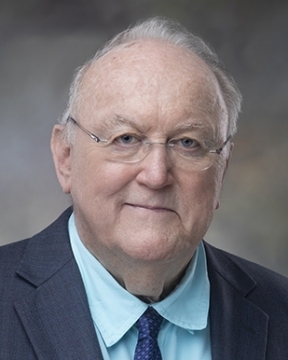 |
Dr. Russel ReiterUT Health San AntonioDual Sources And Functions Of Melatonin: Redox Homeostasis And Circadian Regulation Abe International Symposium (4th Intl. Symp. on Oxidative Stress for Sustainable Development of Human Beings) Back to Plenary Lectures » |
Abstract:This lecture will discuss the data showing that mammals, including the humans, have two major sources of melatonin that exhibit different functions. The best-known source of melatonin, herein referred to as Source #1, is the pineal gland. In this organ, melatonin production is circadian with maximal synthesis and release occurring during the daily dark period [1]. Of the total amount of melatonin produced in mammals, we speculate that less than 5% is produced by the pineal gland [2]. he regulation of the synthesis of pineal melatonin primarily involves the sympathetic innervation of the pinealocytes. Once synthesized, pineal melatonin is released into both the capillaries that perfuse the gland as well as into the cerebrospinal fluid (CSF) of the third ventricle, with both of these fluids exhibiting elevated levels of melatonin at night. The amplitude of the nocturnal rise in CSF melatonin is generally an order of magnitude greater than in the blood [3]. These melatonin rhythms have the primary function of influencing the circadian clock at the level of the suprachiasmatic nucleus (the CSF melatonin) and the clockwork in all peripheral organs (the blood melatonin) via receptor-mediated actions. A second source of melatonin (Source # 2) is produced in multiple tissues throughout the body, probably being synthesized in the mitochondria of these cells [4]. This constitutes the bulk of the melatonin produced in mammals and is concerned with metabolic regulation. Although this review emphasizes the action of melatonin from this source in determining redox homeostasis, it has other critical metabolic effects as well. The possible synthesis of melatonin in mitochondria is of particular interest since these organelles are a primary site of free radical generation [5]. Extrapineal melatonin synthesis does not exhibit a circadian rhythm and it is not released into the blood but acts locally in its cell of origin and possibly in a paracrine matter on adjacent cells [6]. The factors that control/influence melatonin synthesis in extrapineal cells have yet to be identified. We propose, however, that the concentration of melatonin in these cells is determined by the subcellular redox state and that it may be inducible under stressful conditions as is well documented in plant cells [7]. |
|